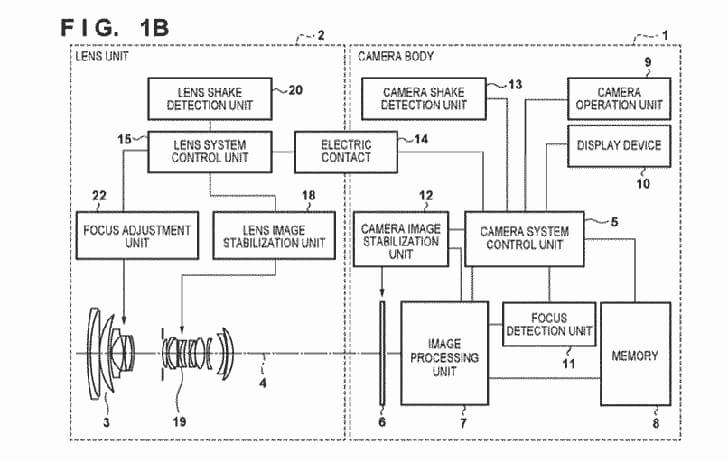Northlight Images has uncovered an interesting patent that deals with reducing the need for an AA filter.
This patent shows a technique to use the sensor stabilization system to address the problems of sampling and spatial aliasing, something that an AA filter is usually responsible for.
This technology in this patent is for both stills and video, I will note, that understanding this patent isn't for the faint of heart.
Check out the full patent at the USPTO website.
Interestingly, Canon Rumors reader Nicolas let me know on Twitter that Pentax does something similar. You can check out the demonstration from the Ricoh YouTube channel below.
Some of our articles may include affiliate links. If you purchase through these links, we may earn an affiliate commission at no extra cost to you.


If one is shooting star trails, maybe the sensor can be shifted one pixel diagonally between each two shots to cover for dead / hot pixels. If shooting a static scene, it could shoot the scene three times, shifting the sensor to cover each pixel location with the three bands skipping the need for Bayer interpolation.
"...when calculating the phase difference for focus detection, the influence of its spatial aliasing cannot be ignored, and in some cases, the obtained result of the focus detection may be largely erroneous. Therefore, conventionally, it is common to arrange the optical low-pass filter so that the response in the high frequency region higher than the Nyquist frequency is reduced..."
That is: the aliasing also causes problems to phase autofocus accuracy. So, contrary to some misconceptions, an AA filter is not an obstacle for the AF operation, but a "conventional" requisite to improve its actual performance. A bit of homogeneous blur doesn't mistake the AF system, which is even more fooled by the false detail. AA-free sensors are aliasing machines (nature shots have no less aliasing than its architecture counterparts: simply, our brain accepts as "sharpness" the part of random false detail).
I haven't shot astro beyond a single exercise in a landscape photography course, but my understanding is the farther a star is from the north star, the farther it moves across the frame, so sensor shift would be useful for stars close to the north star or short exposures, which would put a big emphasis on the less, rather than the capable.
Using the pixel shifting for useful features makes sense, but this use just seems odd. The only other thing I can think of is... maybe its cheaper to manufacture without the AA so spending a couple of hundred thousand dollars to make that happen is worth it. IDK. From the outside looking in, just doesn't seem worthwhile... but hey, maybe we only have a portion of the plan.